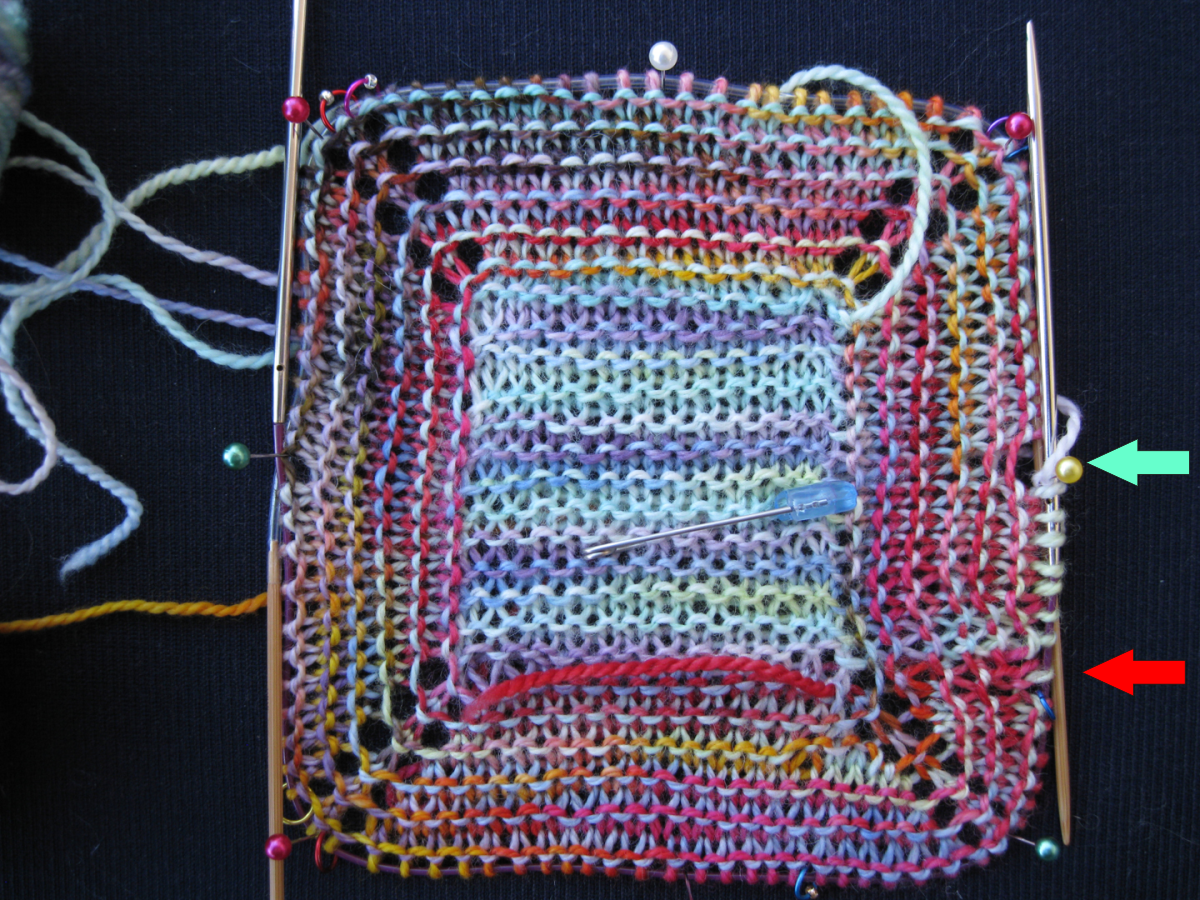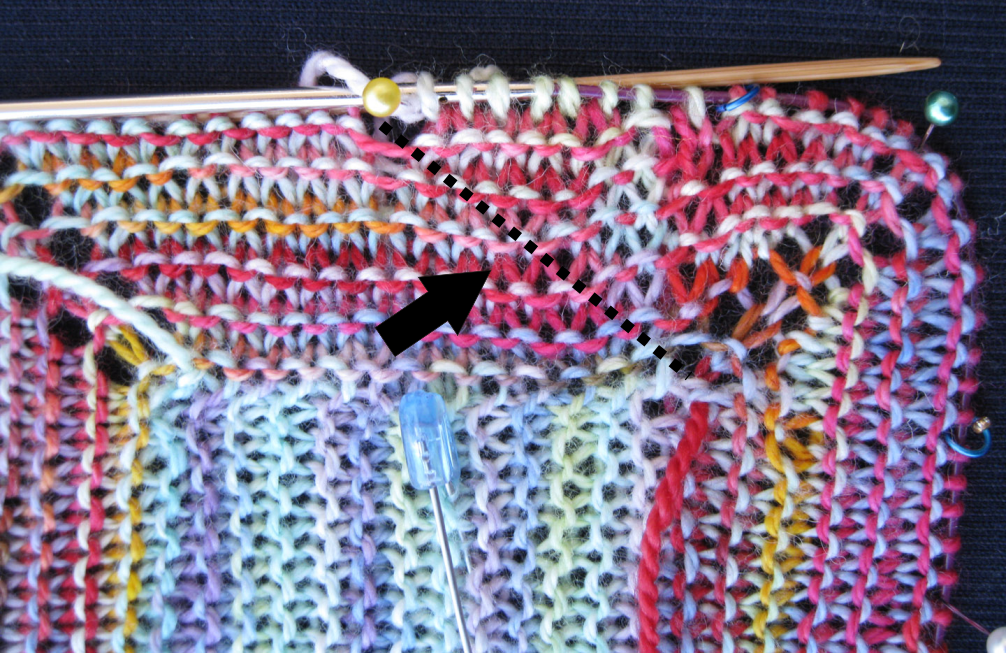Problem
When knitting a Shetland shawl, the center square is knitted back and forth in garter stitch. Then the border stitches are picked up around two sides of the square, thus producing the first row of a circular border. However, if you want to maintain garter stitch on the border, every other row needs to be purled. There's nothing intrinsically wrong with purling (there are even some knitters who prefer it), but for most people, purling can quickly get tiresome when the border has 1000+ stitches on each round.
Pseudo-Solutions
The alternative to purling every other round is to turn the work somewhere, somehow, and knit back, essentially knitting the border flat and using some hocus-pocus to bind the two border edges together. All of the solutions rely on a fancy wrap-and-turn on one corner...making a loose yarnover and knitting it with the next stitch; picking up the bump on one edge and knitting it with the last stitch of the row; sewing the seam when the border is completed, and so on. None of these solutions pleased me. I could always spot the turn line from a galloping horse. No good.
Fleegle's Solution
This humble-looking sample represents a solution to a dilemma that has plagued knitters since the first dinosaur broke two limbs off a tree, wound some vines into a ball, and produced the world's first Stegosaurus shawl.
In the sample shown above, the border is knitted flat, not circularly, but there's no discernible seam, is there? The red arrow points to what you might think is the seam, but it's actually the place where the next row begins. Circular knitting, as you recall, isn't really a circle--it's a spiral.
The solution turns (bad pun, sorry) out to be relatively simple: knit the border using two balls of yarn, not one, alternating direction, so that one ball of yarn (A) is knitted in one direction, the other ball (B) in the other direction. The aqua arrow above shows the position of the yarns in the current row and the place where the switch will happen. The trick that makes this solution work is that A and B are going in different directions, there’s no turn at all, and thus no wonky seam line.
In the image below, the actual color/yarn change for the rows is shown along the dotted black line. Note that the yarn travels one stitch outwards with every other row because of the yarnover increases at the corners. I did a sample where I cheated one stitch and kept the change point in the same place with each row. It didn't make any difference--there still was no seam line.
Here are the directions for a little sample, so you can try this yourself. I used sock yarn scraps in two colors and cast on 13 provisional stitches because I am incredibly lazy and 14 stitches was just too much work. It's a small sample, so when you do the border, you'll need one additional circ or a set of DPNs to go round and round.
Knit a center square with Color A.
Pick (do not pick up and knit) up the stitches along the first side, slip the stitches from the provisional cast-on, then pick up the stitches from the third side, slip the last group of stitches. Don't forget to pick up a stitch at each corner.
Note: At this point, I strongly suggest you rearrange your stitches so that the corners fall towards the centers of your needles, not at the ends. Otherwise, you will be working yarnovers at the ends of your needles, and that's always messy.
You are now at the beginning corner.
Attach color B, turn your work, and knit all the way around to the beginning corner.
Drop B, turn, pick up A, and knit around, working an OKO at each corner.
Drop A, turn, pick up B and knit plain around.
And so on.
In this sample, you will always be doing OKO at the corners with color A and a plain knit row with color B.
I put a safety pin on the side where I should be knitting color A, so I didn’t get confused. Obviously, when you are knitting a real shawl, both balls will probably be the same color. I will therefore put a safety pin on one side of the shawl and a some indicator on the corresponding yarn ball when I use this technique on my Queen Susan shawl.
And, of course, this trick is not limited to shawls--it can be used any time you want to knit garter stitch in the round without purling.


